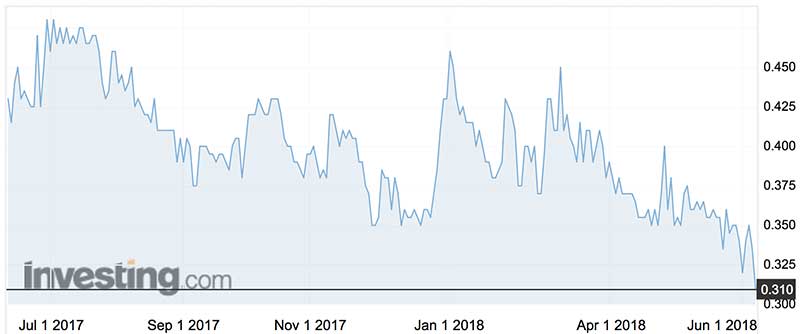Micro-X navigates the ‘valley of death’ as it rolls out high-tech x-ray

It is the challenge confronting all small outfits as they seek to transition to full commercial production and sales from start-up: can they navigate the “valley of death”.
In other words, can they finance a blow-out in costs as production ramps up, before they know whether revenues will cover costs.
Micro-X (ASX:MX1) knows all about that, as it launches its new generation of mobile X-ray, which is based on its revolutionary carbon nano tubes.
X-rays is a field that has had few technical advances to bring it into the 21st century.
“It is the world’s first electronically-controlled X-ray,” Micro-X’s boss, Peter Rowland, says of his new kit, the DRX Revolution Nano, which is being marketed through Carestream.
The product has been launched in the key US market, ahead of the main selling season, which is expected in December.
As a result, the company has several months to wait before it has a clear idea of likely sales, and revenues.
A $5 million convertible note issue was completed in March to keep its cash levels up along with borrowing against an expected R&D refund from the government.
More fundamentally, Micro-X is negotiating the entry of a cornerstone partner which will also strengthen the balance sheet.
It has claimed interest from healthcare and security companies which are keen to tap into its carbon nano tube technology.
But, despite the company’s high hopes, broker Wilsons reckons the company needs as much as $15 million.
For a company valued in the share market at just $50 million, that is a lot of money.
“We estimate that the company’s cash demands will be significantly higher than [the $5 million convertible note] as its manufacturing team supports Carestream’s DRX Revolution Nano launch and its R&D folks contemplate a myriad of potential projects,” the broker told clients in a note.
“There are plenty of adjacent opportunities for miniaturised X-ray sources based on carbon nanotubes in and outside of healthcare.”
Micro-X’s Rowland rejects that view, arguing the company is adequately funded.
“We’re confident of our cash position,” he says. “We’re starting to get revenue in from orders. We’re in a good position. We have enough cash to see us through. We’re not worried about that and we’ll find a strategic investor.
“Any doubt on that is completely removed.

“We’ve got some global players in radiography which see enormous value in Micro-X, “ he said, with two European majors in contact with the company in the past few weeks alone, which are keen to snap up a stake.
“With competitive tension, can we do a deal at a premium to the share price? I think we can,” Rowlands says. “We’ve slowed the frontrunner, while encouraging some of the laggards to the table.”
Micro-X told the market earlier in the year these negotiations would be sorted by mid-year, although now that looks like being by the end of September, Mr Rowlands told Stockhead.
Even so, the limited visibility on the outlook for sales remains.
“We’re in a rotten place,” Rowland concedes. “You know that the sales graph will curve upwards — but at what rate?” he says of the outlook for sales of its X-rays.
- Bookmark this link for small cap breaking news
- Discuss small cap news in our Facebook group
- Follow us on Facebook or Twitter
- Subscribe to our daily newsletter
Delays in getting its X-ray to market has slowed Micro-X from pursuing a range of additional opportunities to use its technology although it has, for example, inked a deal with the UK government to use its technology to detect explosives hidden in consumer electronic devices, and beyond.
Concerns over the near term pressures on its finances pushed the company’s share price down to just 32c at the start of the month, which is well below the highs of 59.5c touched soon after it went public, raising $20 million.
It is holding at around 35c at present.
“The convertible note issue was intended to protect the shareholder base at 30c,” Rowland said. “Between that and the R&D advance we’re confident of our cash position.”
Along with management, Micro-X boasts Thorney Technologies as a substantial shareholder.
UNLOCK INSIGHTS
Discover the untold stories of emerging ASX stocks.
Daily news and expert analysis, it's free to subscribe.
By proceeding, you confirm you understand that we handle personal information in accordance with our Privacy Policy.








